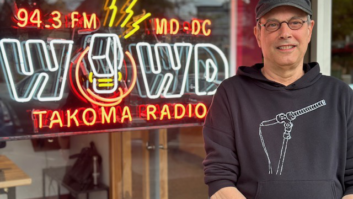
Is your station using the same old call-in tactics in the era of e-mail, text and instant messaging? ©iStockphoto/JJMaree “You’re caller No. 9 … You win!!!!! (Insert listener reaction here.) Where you calling from? (Insert listener town). How do you feel? (Insert either hyperactive response or dud here.) Aren’t we the best for giving you a prize?” (Insert listener telling us she loves us.)
Reading those lines aloud probably makes you feel a little silly. Yet now, in 2009, you can hear this same bit across the dial in America.
Since the dawn of radio, the telephone has been an integral part of the medium. For more than 70 years, the phone was the primary vehicle for listeners to interact with radio stations. The flaw has been that while radio is a mass communication medium, the telephone enabled only a small persistent few to contact the station.
Inevitably, just the effort required to get through to someone who will answer the phone in the studio breeds a small universe of listeners who interact with any given station. If you’ve been live on the air at any station for more than a week or two, you get to know the voices and many of the names of those who call.
When you’re on the air, you may have hundreds or tens of thousands of people listening, but you have only a tiny population calling in to participate actively in on-air dialogue, contesting or just conversation with a friendly voice. There isn’t a station alive that gives away prizes and doesn’t have “contest pigs,” the same dozen people who win many of the prizes the station gives away.
New tactics
Now that listeners can interact with radio stations by using new media, my suggestion is that we develop new tactics to deal with — and take advantage of — a much larger universe of active participants.
It doesn’t make sense anymore to prompt listeners to use only the telephone to enter a contest verbally, or to call us only during a talk show.
I recently ran a contest for a pair of tickets to a sporting event and received more than 10,000 entries in two days. Each of these contestants got an auto-response to tell them their message had been received and prompting them to listen at a specific time for their name in order to win. This is certainly better than answering the phone eight times, telling the ninth caller he was a winner and then putting the phone lines on hold for 20 minutes.
How did we accept that enormous volume? Text messaging. Don’t want to invest in that technology? Use e-mail. You won’t get as many entries as you will with texting, but you’ll still involve hundreds, if not thousands of people instead of 10. Remember: You are the mass communication business and you want as many people as possible to respond to you.
How do we use new media for shows that require conversations, like talk shows?
Use any of the methods that permit mass return communication: E-mail, text messaging, instant messaging and social networking pages like Facebook.
You’ve never read comments on-air from someone who posted on their Facebook page? What are you waiting for?
As I indicated, some of this requires a new approach. It may be that the main host doesn’t read all the e-mails or text messages aloud. You may want extra voices to do that to add greater flavor to the show. You may want to try using a text reader (computer generated). Of course, I’m not suggesting you shouldn’t use a phone anymore for a talk show; just don’t limit the interaction to Mr. Bell’s invention.
Let your listeners know that they really can reach you with their view. Maybe you’ll want to save everything you receive and post it to your Web site either during or after the show.
A word of caution: On-air talent may react negatively to utilizing text messaging, instant messaging and e-mail rather than the phone. This is serious change and it’s typical to want the status quo.
The telephone encourages the lonely, disenfranchised and hyper fan to get to know the talent — often by first name. This misleads talent into believing they’re vital to the lives of most of their listeners. The truth is, most of their listeners don’t even know their names and will never contact them via phone. But by opening the floodgate of return communication, talent can finally allow mass numbers of people to respond.
We need a new interactive approach that helps radio evolve into a true interactive medium. Still don’t agree? Think of your own behavior now when communicating at work. Do you communicate with more people on the phone or by using e-mail, social networks and text messaging? Hello? Anyone ready for a new approach?
The author is president of Lapidus Media. Contact him at[email protected].












